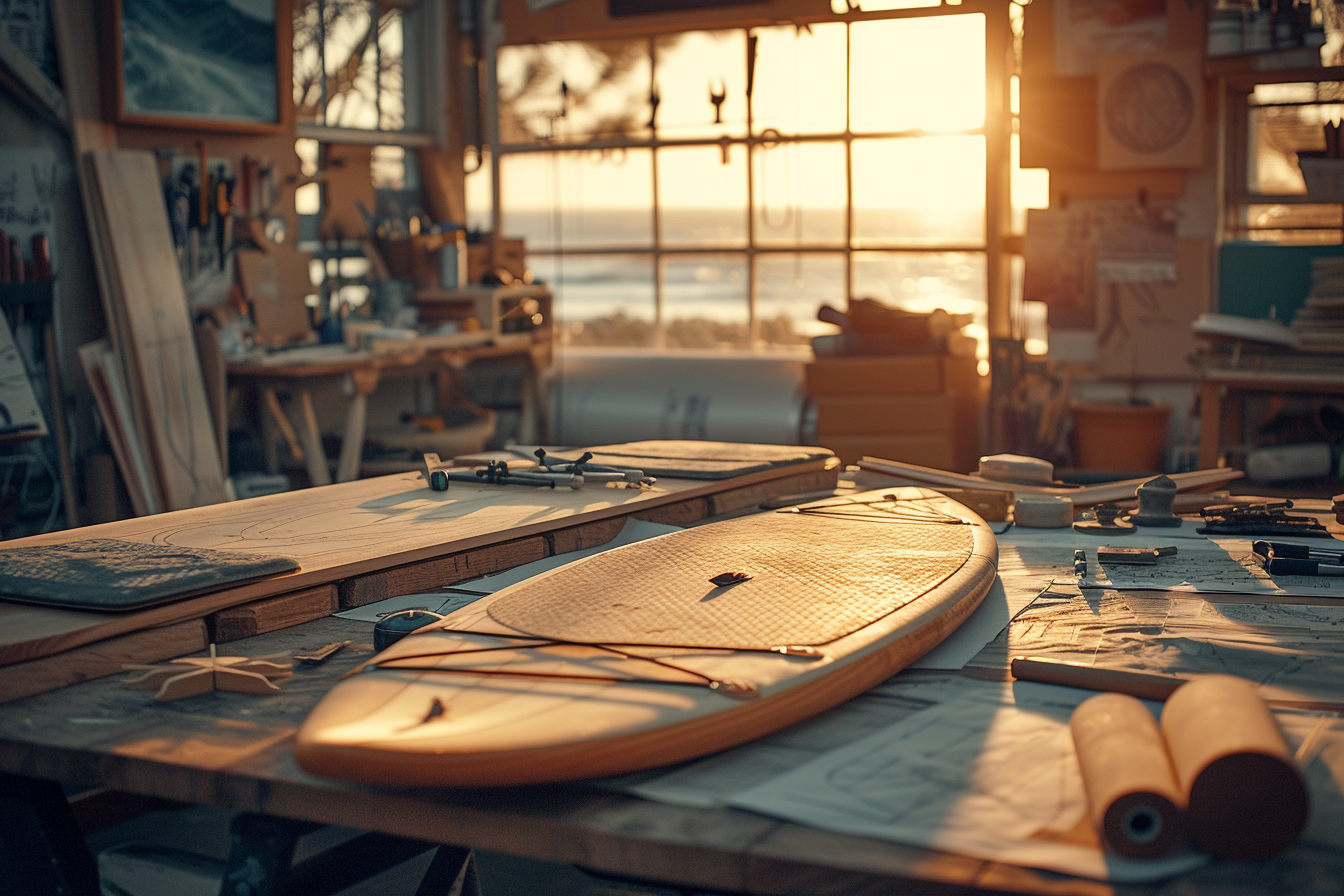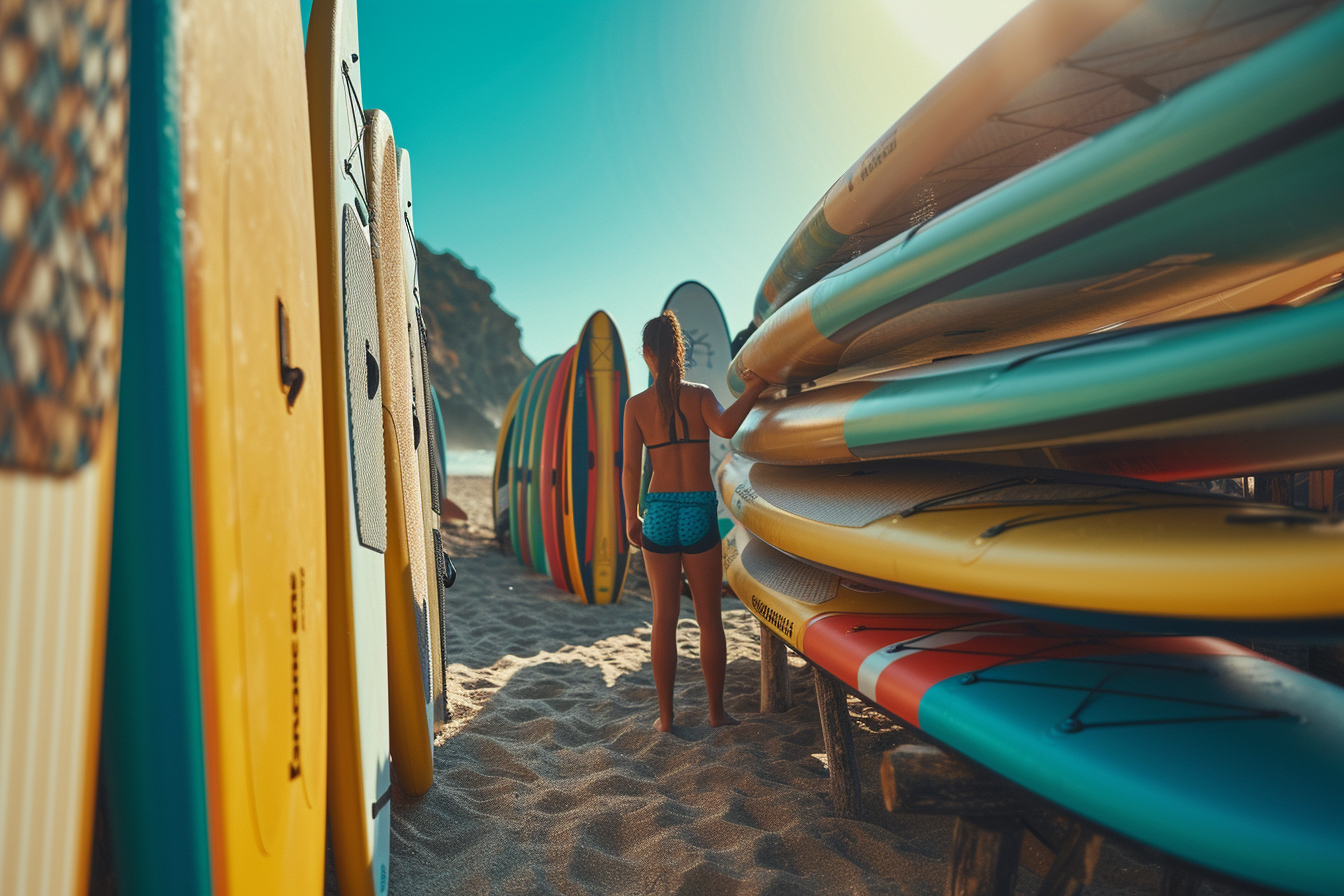Stand-up paddleboarding (SUP) has surged in popularity as a versatile water sport that can be enjoyed across tranquil lakes, coastal ocean waters, and even through the challenge of river rapids. This rapid increase in interest has been matched by an explosion of paddle board options, each catering to different needs and preferences. Whether you’re a beginner or an experienced paddleboarder, knowing the differences between these options is the cornerstone of making an informed decision.
Solid versus inflatable paddle boards
Solid paddle boards, typically constructed from foam, fiberglass, or plastic, offer stability and performance, especially for activities like surfing or racing. Alternatively, inflatable paddle boards boast ease of storage and transport, making them ideal for those with limited space or a penchant for adventure travel. They have become remarkably rigid once inflated and can withstand a wide range of conditions.
Specialty boards for various activities
Beyond the basic separation of solid and inflatable, further varieties include all-around boards, touring boards, racing boards, and yoga boards. All-around boards offer great versatility, perfect for those just getting their feet wet in the sport. Touring boards are designed with longer waterlines to enhance glide and efficiency over distance. Racing boards are narrower and built for speed, demanding more skill to master. Yoga boards provide a wider, stable platform to practice poses on the water.
Evaluating board size and volume
Size and volume are critical components when selecting a paddle board. These dimensions directly impact the board’s stability and how it performs under various weights and in differing conditions.
Board length
Board length affects maneuverability and speed. Short boards (under 10 feet) are more agile, suitable for kids and surf environments. Medium boards (10 to 12 feet) offer a balance, serving well for all-around use. Long boards (over 12 feet) glide effortlessly, making them the choice for long-distance touring and racing.
Board width
A wider board, typically between 31 and 36 inches, provides a more stable platform, advantageous for beginners or those using the board for yoga and fishing. Narrower boards, in contrast, offer speed and require more experienced balance control.
Board thickness and volume
Thickness and volume determine a board’s ability to float you plus any gear. Most boards range from 4 to 6 inches in thickness. Higher volume boards have more floatation, catering to heavier riders or those who want to carry more gear.
Material and construction considerations

Material and construction play pivotal roles not only in the board’s performance but also in its durability and price.
Solid board materials
With solid boards, EPS foam is a common core material, usually encased in epoxy or fiberglass. These are lightweight yet strong. Plastic boards offer ruggedness but at the expense of additional weight and reduced performance.
Inflatable board technology
Inflatable boards have advanced with PVC exteriors and drop-stitch technology, ensuring they can withstand substantial pressure and use. High-quality inflatables offer durability and experience close to that of a solid board.
Determining board fitness based on skill level
Your current skill level greatly affects the type of board that will provide the most enjoyment and room for growth.
For beginners
If you’re new to the sport, look for a wide, stable board that forgives mistakes. All-around boards are generally the best introduction, as they are designed to perform decently in most conditions.
For intermediate paddleboarders
Intermediate users might explore specific board types that align with their preferred paddling activities, like touring, racing, or surf SUP.
For advanced enthusiasts
Advanced paddleboarders typically know exactly what they want and can handle lower-volume, high-performance boards. They may focus on specialized boards with features like displacement hulls, board shapes, and contours that facilitate high-level maneuvering and speed.
Additional features and accessories
Various features and accessories can enhance the paddleboarding experience. These include deck pads, cargo bungees, handles, fins, and mounts for cameras or fishing rods. Look for a board with a comfortable and grippy deck pad, and consider the fin setup if you’re seeking agility (fewer or smaller fins) or straight-line stability (larger or more fins).
Deck pads
Deck pads provide cushioning and grip for your feet, an important feature for long paddles or yoga sessions.
Cargo bungees and ties
Cargo bungees or ties allow you to secure personal items or adventure gear, expanding the activity possibilities with your board.
Board fins
Different fin setups serve distinct purposes. Single fins are good for straight-line tracking, while multiple fins offer better control in surf conditions.
Test and experience before purchase
Whenever possible, test different boards to get a real feel for how they handle. Many shops offer rental or demo days where you can try before you buy. Engage with the local paddle board community; they often provide valuable insights and experiences with different board types.
Local clubs and communities
Engaging with local paddle boarding clubs or groups can lead to test opportunities, friends, and the sharing of knowledge that might influence your decision.
Retail demo programs
Some retailers offer demo programs that allow you to test multiple boards over a period, which can be invaluable in making the right choice.
Price and value
Finally, consider price and the value you’re getting. While high-end boards offer premium features and performance, many mid-range boards are exceptional in quality and capability. Price should be measured against how often you’ll use the board, the conditions you’ll face, and the board’s lifespan.
The investment mindset
Approach your purchase as an investment. A higher initial cost for a quality board that suits all your needs might save money in the long run over replacing a cheaper, less durable option.
Warranties and brand reputation
Always check the warranty and research brand reputations. A company that stands behind its products can be indicative of quality and customer satisfaction.
Connecting with experts
Never underestimate the value of expert advice. Specialty shops with knowledgeable staff can offer personal recommendations and insights that generic sporting goods stores may not provide.
Leverage retail expertise
Informed staff at specialty paddle board shops can provide recommendations based on your body type, skill level, and intended use, providing a curated shopping experience.
Seeking online communities
Online forums and communities centered around paddleboarding can also be treasure troves of information, user reviews, and personal testimonies that can guide you toward the perfect paddle board purchase.
By following these guidelines, you can select a paddle board that not only matches your current needs but also serves as a companion on a journey of growth and exploration within the sport. Focus on the balance between personal needs, skill level, and the environments you’ll paddle in to realize the full joy of stand-up paddle boarding.


